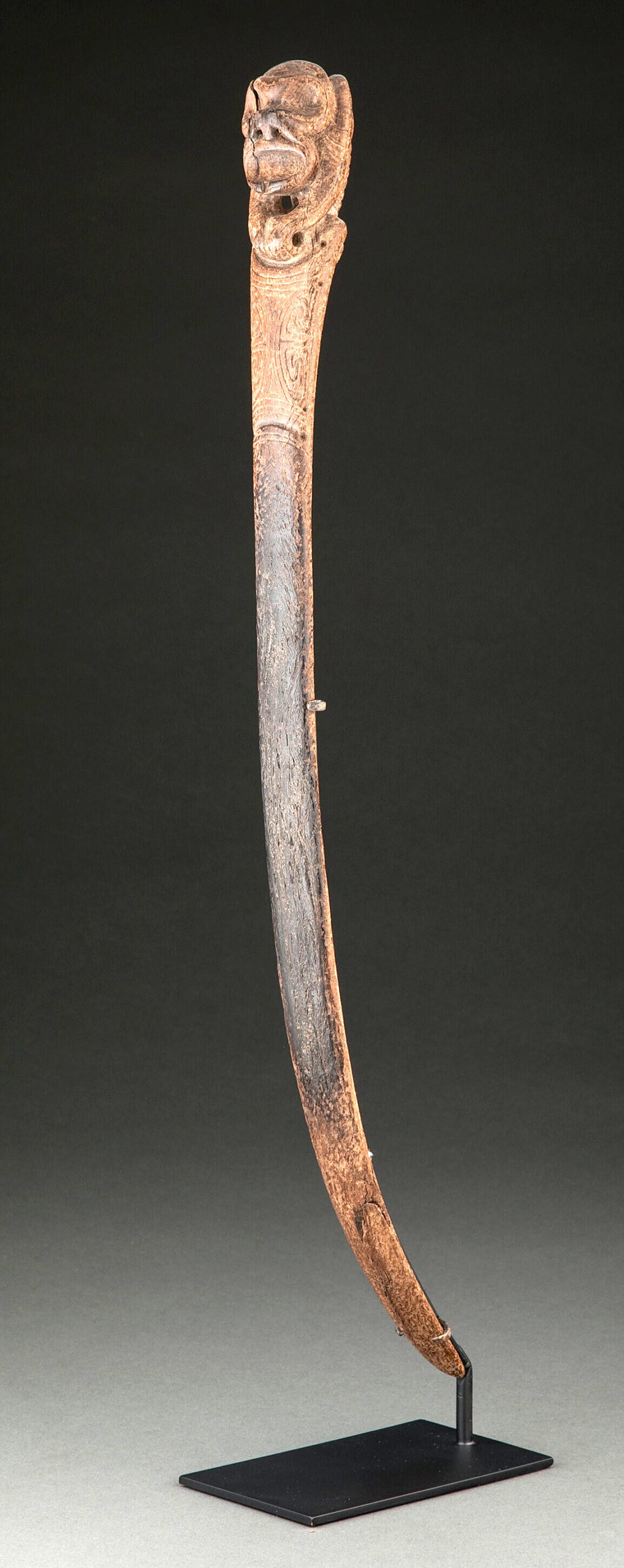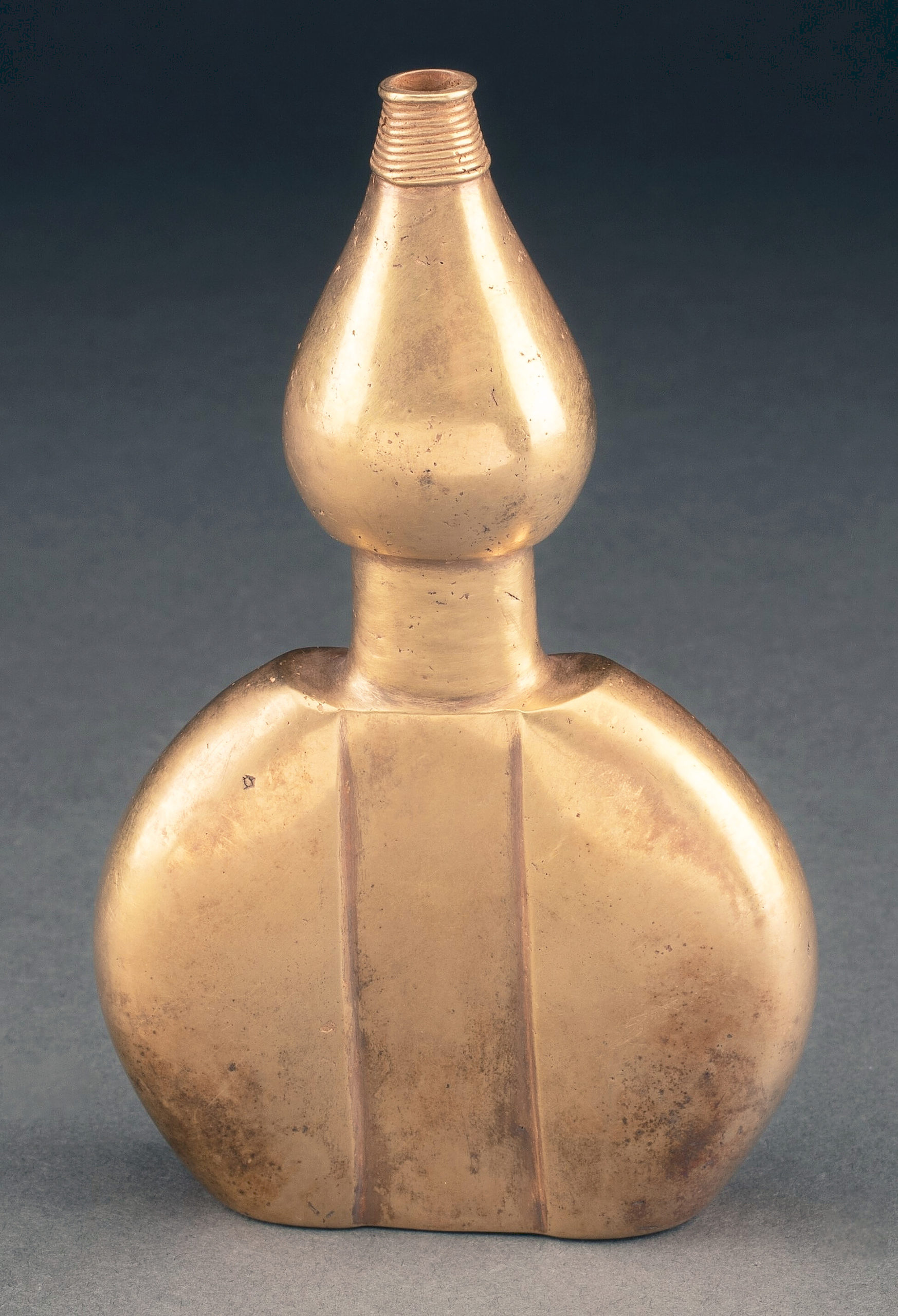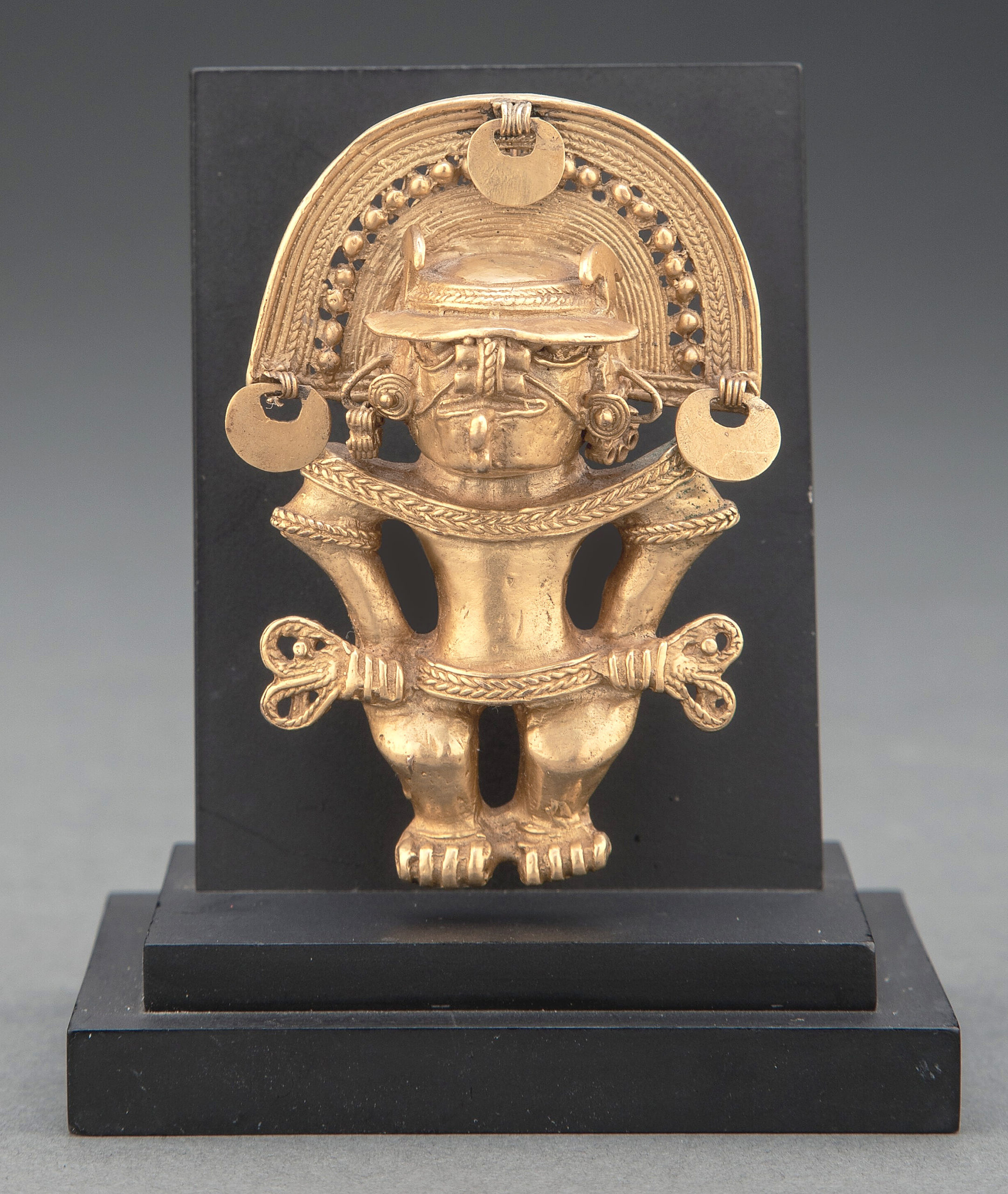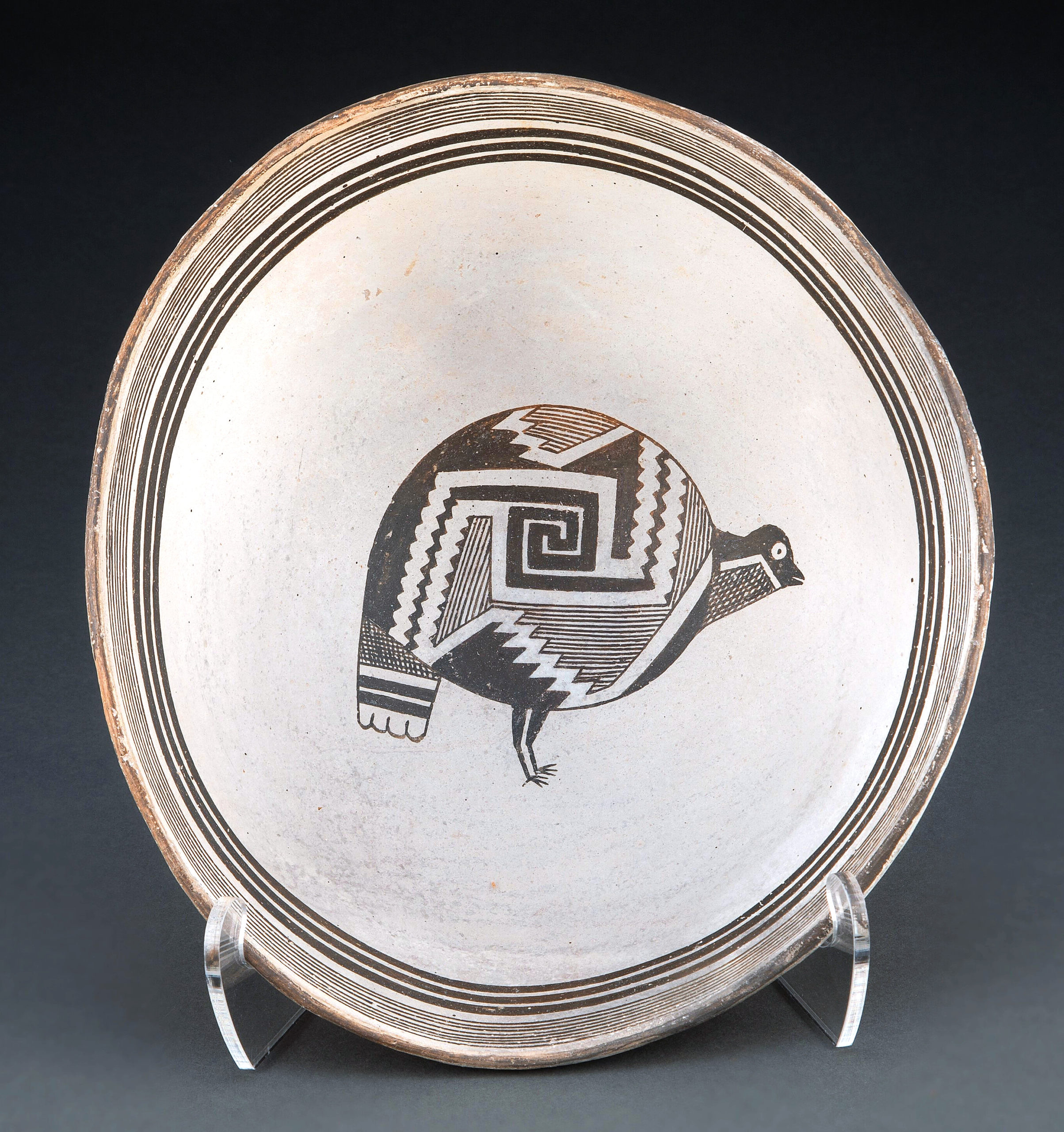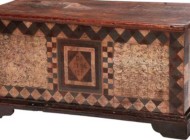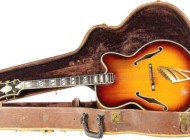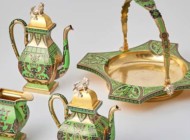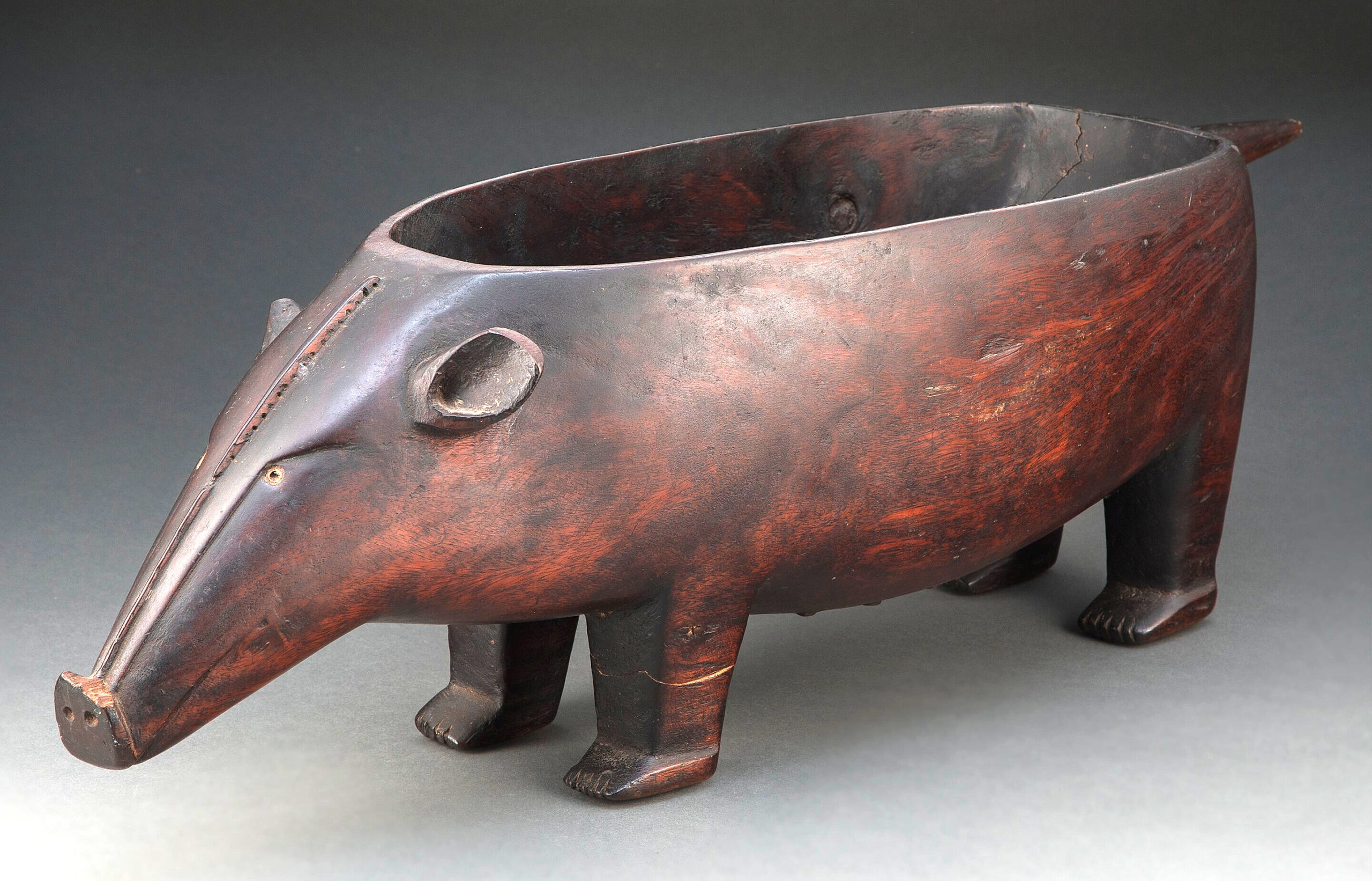
One of only three known, this carved hardwood feast bowl in the shape of a female pig was the surprise top lot of the auction at $68,750.
Review by Z.G. Burnett; Images Courtesy of Heritage Auctions
DALLAS — The Ethnographic Art: American Indian, Pre-Columbian and Tribal Signature Auction reached almost $1 million on June 2 at Heritage Auctions. The sale offered more than 600 lots of sculpture, pottery, jewelry, clothing, ritual objects and more. Many of these had both practical and spiritual meanings, and even the most domestic objects were elaborately decorated with abstract and figural designs.
The sale was led by a misleadingly humble feast bowl from the Santa Cruz Islands, which are a part the Temotu Province of the nation of the Solomon Islands, in the shape of a female pig that collected $68,750 and doubled its estimate. The bowl was once part of a chief’s treasury in the late Nineteenth or early Twentieth Century, and would have been decorated with hair and other fibers to better resemble an island sow. It was acquired in the 1920s by Robert Malcolm Smith, manager of the Kauri Timber Company while stationed in the southeastern Solomon Islands, then by Wayne Heathcote, London, and was consigned to Heritage by a private collector. This bowl is one of three like it known, the other two are in Australian and New Zealand museum collections.
Next was a rare Chupicuaro mask that drew more than a dozen bids before it ended at $35,000. From the late pre-Classic period (circa 300 BCE-300) of Guanajuato, Mexico, this buffware work with extensive provenance showed the traditional Chupicuaro cross- or step-fret designs characteristic of the culture’s large figures and masks, although this has unique zig-zag lines from the bridge of the nose down to the cheek areas, and similar lines from the lower lip down the chin. The mouth also showed small pellets for teeth. This mask was exhibited from 1990 to 1993 at the Dallas Art Museum’s “Chocolate Pots and Tomb Guardians from Ancient Mexico.”
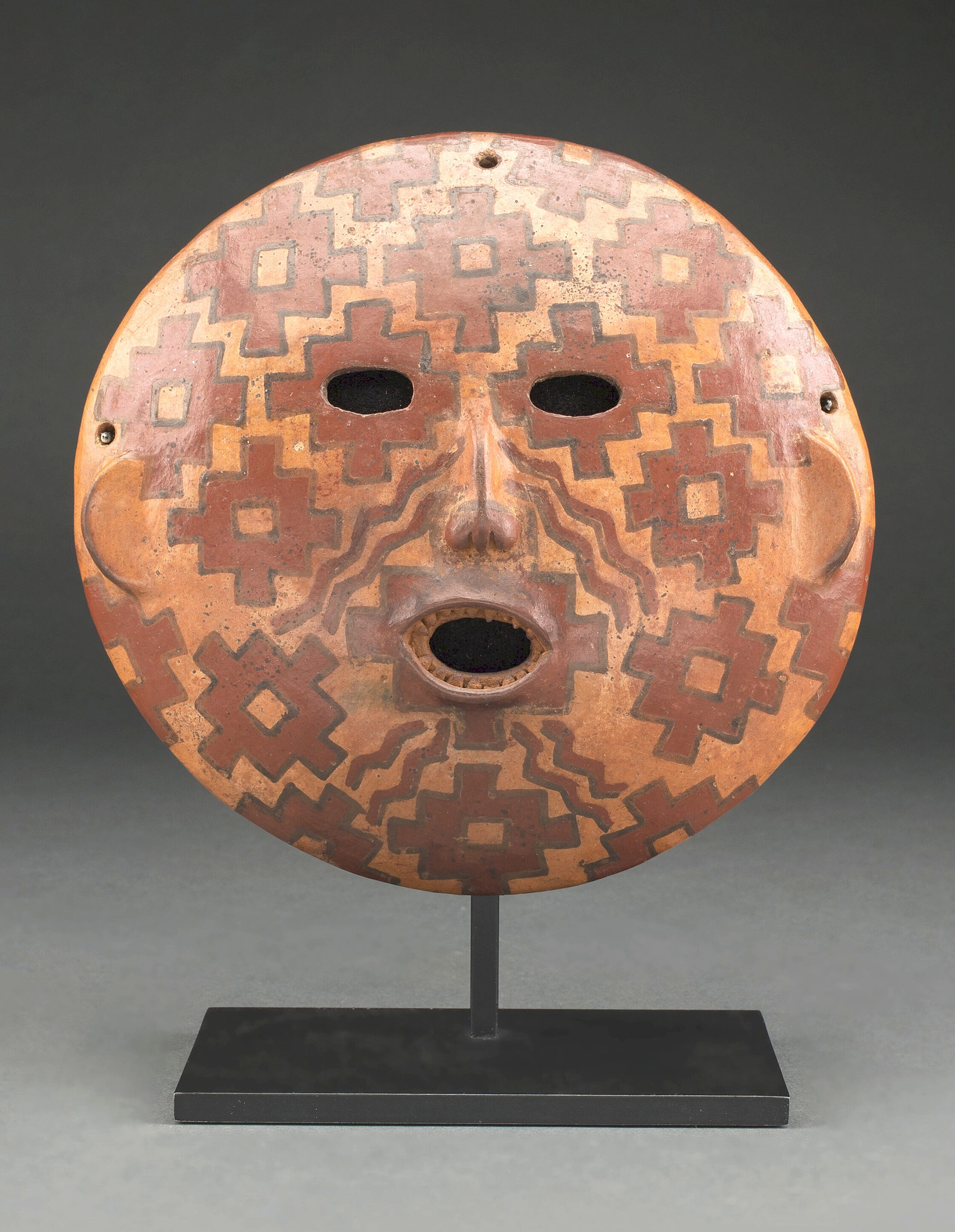
Showing late pre-classic designs of the Chupicaro people, Guanajuato, Mexico, this mask placed second in the sale at $35,000.
Another mask did well in the auction; a recently excavated Sican Lambayeque mask (circa 750-1350) that achieved $30,000. According to ancient myths from this coastal region, silver was associated with noblewomen or priestesses, and masks like this suggest that such masks were part of the burial regalia of high-status women as well as men. As many as five masks would be interred with the deceased, one attached to the head of the textile-wrapped mummy, and the other four stacked at the feet.
One definitively ritualistic item was a large Taino purging stick or vomitivo, made circa 1000-400 BCE from carved ironwood and found deep in a cave in the Dominican Republic, probably placed there by a shaman. The polish and patina is indicative of its extensive native use as an instrument to cleanse the body by purging before ingesting hallucinogenic substances. At one end is an openwork, fully carved zemi or spirit figure, depicted with an oversized head and articulated body. The purging stick was bid to $32,500.
Two Colombian gold alloy, or tumbaga, lots shined during the sale. First was a Quimbaya poporo (circa 100-600), made from gold alloy that sold for $20,000. Seen in ancient depictions of chiefs and priests, these may have been used to carry activating agents used to ingest cacao leaves. Following this was a Tairona figural pendant (circa 800-1400) in extraordinary detail and condition, with all of its adornments and weapons attached, bought for $12,500.
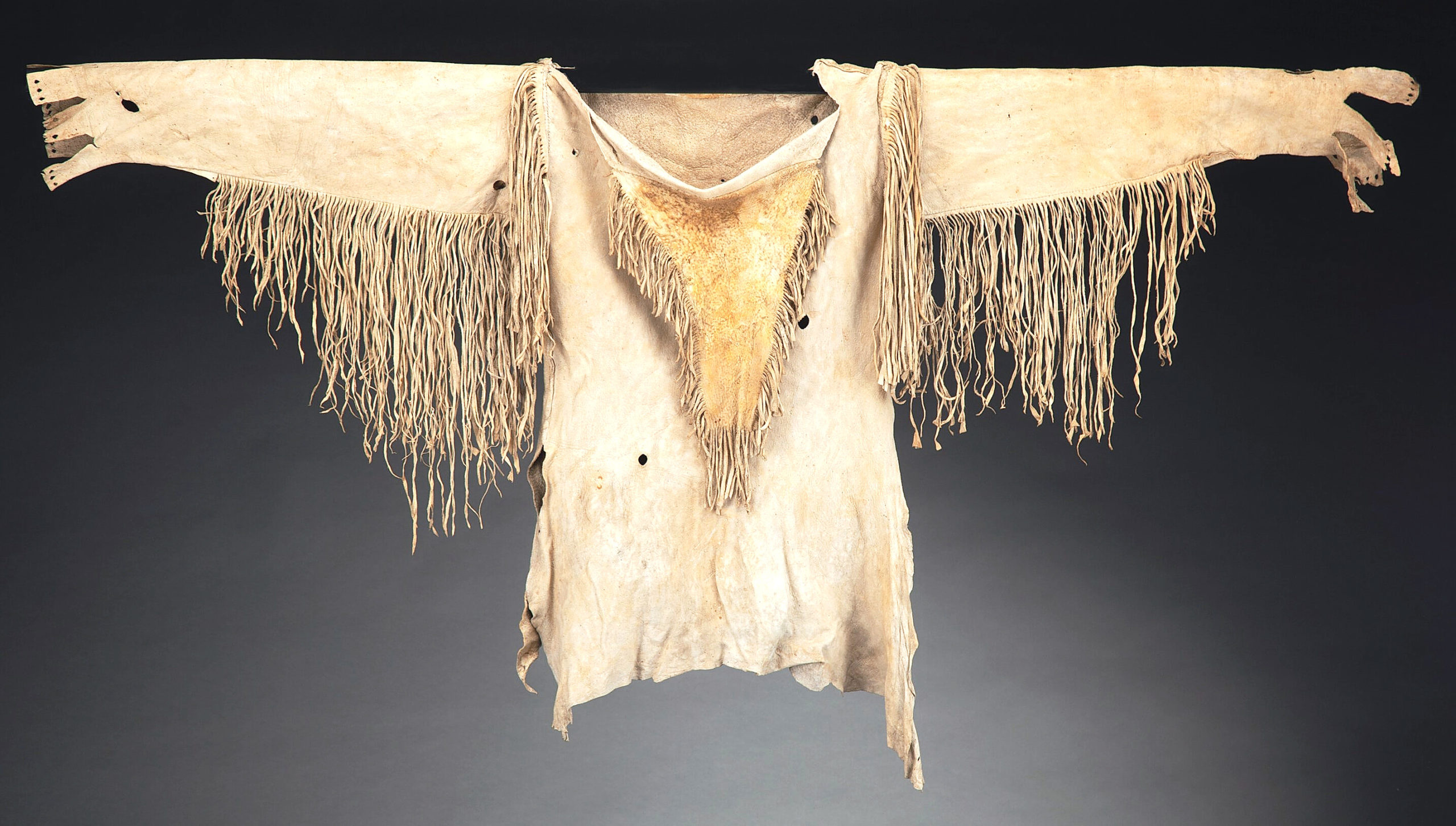
Southern Plains American Indian hide shirt, circa 1880, still showed yellow ochre paint and achieved $13,750.
American Indian art also found favor with bidders. A Southern Plains painted hide shirt in remarkably preserved condition showed yellow ochre pigment and dated to about 1880, selling for $13,750. Next was a Mimbres, central Mexican black on white clay bowl that was decorated with a nighthawk. Dating from 950 to 1150, this bowl had a long provenance and was bid to $12,500.
Prices are quoted with buyer’s premium as reported by the auction house. For information, 214-528-3500 or www.ha.com.


